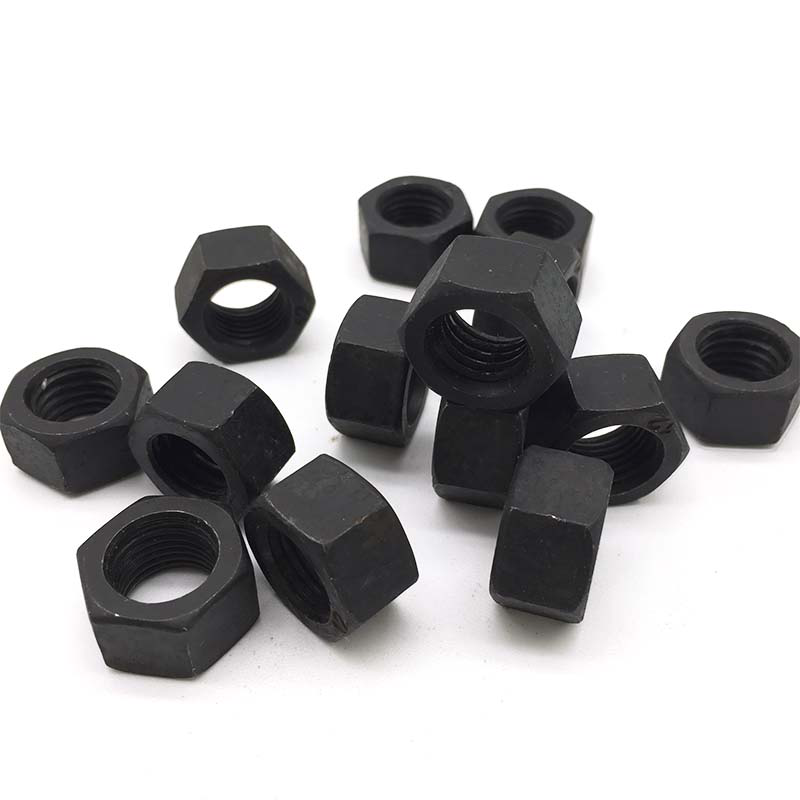Why do high strength nuts need quenching hardness to meet the requirements
Some parts bear higher stress than the center under the action of alternating load and impact load such as torsion and bending. In the case of friction, the surface layer is also constantly worn. Therefore, the requirements of high strength, high hardness, high wear resistance and high fatigue limit are put forward for the surface layer of some parts. Only surface strengthening can meet the above requirements. Due to the advantages of small deformation and high productivity, surface quenching is widely used in production.
According to different heating methods, surface quenching mainly includes induction heating surface quenching, flame heating surface quenching, electric contact heating surface quenching, etc.
• induction surface hardening
Induction heating is to use electromagnetic induction to generate eddy current in the workpiece and heat the workpiece. Compared with ordinary quenching, induction surface quenching has the following advantages:
1. The heat source is on the surface of the workpiece, with fast heating speed and high thermal efficiency
2. Because the workpiece is not heated as a whole, the deformation is small
3. Short heating time and less surface oxidation and decarburization
4. The surface hardness of workpiece is high, notch sensitivity is small, impact toughness, fatigue strength and wear resistance are greatly improved. It is beneficial to develop the potential of materials, save material consumption and improve the service life of parts
5. Compact equipment, convenient use and good working conditions
6. Convenient for mechanization and automation
7. It can be used not only in surface quenching but also in penetration heating and chemical heat treatment.
Basic principle of induction heating
When the workpiece is placed in the inductor, when the inductor passes through the alternating current, the alternating magnetic field with the same frequency as the current is generated around the inductor, and the induced electromotive force is generated correspondingly in the workpiece, which forms the induced current on the workpiece surface, namely eddy current. Under the action of the resistance of the work piece, the electric energy is converted into heat energy, which makes the surface temperature of the work piece reach the quenching and heating temperature.
• properties after induction surface hardening
1. Surface hardness: the surface hardness of the workpiece after high and medium frequency induction heating is usually 2-3 units (HRC) higher than that of ordinary quenching.
2. Wear resistance: the wear resistance of workpieces after high frequency quenching is higher than that after ordinary quenching. This is mainly due to the combined results of small martensite grains, high carbide dispersion, high hardness ratio and high compressive stress on the surface of the hardened layer.
3. Fatigue strength: high and medium frequency surface quenching greatly improves the fatigue strength and reduces the notch sensitivity. For the workpiece with the same material, the fatigue strength increases with the increase of the hardening depth within a certain range, but when the hardening depth is too deep, the surface layer is compressive stress, so the fatigue strength decreases with the increase of the hardening depth, and the brittleness of the workpiece increases. The depth of general hardening layer δ = (10-20)% d. It is more suitable, among which D. Is the effective diameter of the workpiece.
Post time: Apr-07-2020
